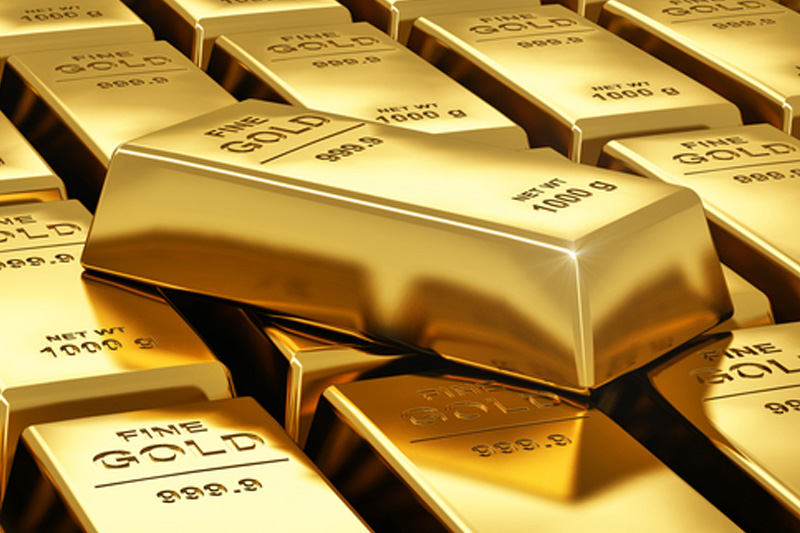Investing.com -- Gold surged more than 2%, amid a broadly weaker dollar, as markets largely ruled out a summer interest rate hike from the Federal Reserve following a dismal U.S. jobs report on Friday morning.
On the Comex division of the New York Mercantile Exchange, Gold for August delivery traded between $1,209.50 and $1,245.75 an ounce, before settling at $1,241.95, up $29.35 or 2.42% on the session. With the sharp gains, Gold enjoyed its strongest one-day rally in more than two months, erasing most of its losses from a recent rout. Previously, Gold tumbled approximately 5% since May 18, closing lower in 11 of 12 sessions. Nevertheless, Gold is still up by more than 15% since the start of the year, holding onto gains from the strongest first quarter of a year in more than a decade.
Gold likely gained support at $1,125.00, the low from February 3 and was met with resistance at $1,304.40, the high from May 2.
On Friday morning, the U.S. Department of Labor's Bureau of Labor Statistics (BLS) said nonfarm payrolls in May rose by 38,000, less than a quarter of analysts' expectations for monthly job gains of 158,000. It marked the slowest monthly job growth since September, 2010 and raises questions on the strength of the broader economy following a downwardly revised total of 123,000 in April. As a result, the three-month average which hovered near 200,000 early this spring, crashed to 116,000.
The losses were concentrated among the information sector, which fell by 34,000, reflecting the six-week strike involving Verizon union workers that was settled last week. The manufacturing industry remained weak, losing 10,000 positions on the month, while jobs in the construction sector fell by 15,000, one month after spending in the industry dipped by the largest amount in five years. In addition, jobs in the temporary help services category, a leading indicator of future job growth, fell by 21,000. Meanwhile, the unemployment rate dropped by 0.2% to 4.7%, as an estimated 500,000 Americans left the workforce last month. The labor force participation rate inched down 0.2% to 62.6%, while average hourly wages rose by 0.2% on the month. The average work week held steady at 34.4 hours.
The Federal Open Market Committee (FOMC) has left the target range of its benchmark Federal Funds Rate unchanged at a range between 0.25 and 0.50% in each of its first three meetings this year. Last December, the FOMC abandoned a seven-year zero interest rate policy by raising interest rates for the first time in nearly a decade.
Over the last year, Fed chair Janet Yellen has consistently reiterated that the FOMC will take a data dependent approach with the timing of its first interest rate hike this year. A cautious Fed may err on the side of leaving interest rates low at its next meeting on June 14-15, before reconsidering a rate hike in July. Complicating matters, voters in the U.K. could rattle the global economy later this month if they approve a referendum enabling Britain to depart from the European Union on June 23.
The CME Group's (NASDAQ:CME) Fed Watch tool lowered the probability of a June rate hike to 3.8% on Friday from 20.6% a day earlier. The CME Group also placed the odds a rate hike by the Fed in July at 34.6%, down from 48.6% on Thursday.
Investors who are bullish on Gold are in favor of a gradual tightening of monetary policy by the Fed. Gold, which is not attached to interest rates, struggles to compete with high-yield bearing assets in rising rate environments.
The U.S. Dollar Index, which measures the strength of the greenback versus a basket of six other major currencies, crashed more than 1.5% to a three-week low of 93.97. The index has tumbled more than 6% since early-December.
Silver for July delivery gained 0.320 or 2.00% to $16.345 an ounce.
Copper for July delivery rose 0.041 or 1.98% to $2.111 a pound.
